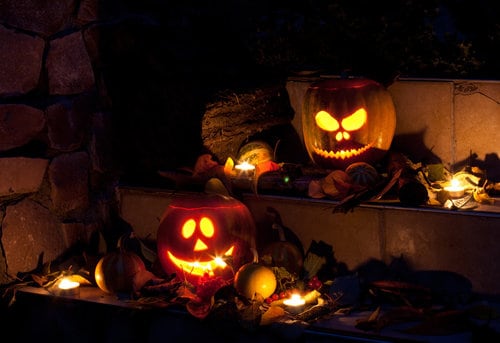
Halloween is the night for kids to dress up as someone else, and go door-to-door asking for candy. Put that simply, it sounds like a pretty strange tradition. It is thought to have started in ancient times with the Celtic festival of Samhain, where bonfires were lit and costumes were worn to try to scare off any ghosts. By the 700s, November 1st was known as All Saints’ Day, to honor saints and martyrs, while using the traditions of Samhain. The evening before All Saints’ Day became known as All Hallows’ Eve, which eventually evolved into the community, candy, and costume-based event as we know it – Halloween on October 31st.
Halloween is a big deal, and is widely celebrated (about 71% of Americans partake in Halloween festivities). It’s estimated Halloween adds $10 billion to the American economy every year. Halloween is by no means some small event, which is why its impact reaches from kids with costumes to fatalities in hospitals across the country.
Let’s start with the effects of the costumes themselves. Sometimes they are bulky, with long robes, capes, or dresses, which lend very well to tripping and falling. That alone can lead to a trip to the ER for lacerations or a broken bone. Masks can obstruct vision, causing injuries from minor falls, or even running across the street to another house and not seeing the car coming down the road. And boom – time to pause the festivities and call 911.
The Centers for Disease Control and Prevention (CDC) looked at mortality data from the National Highway Traffic Safety Administration from 1975-1996 and estimated that childhood pedestrian deaths are four times higher on Halloween than any other night. It makes sense because kids get caught up in the excitement (and the sugar high) and all rules about watching for cars and being careful fly right out of their heads. This is why drivers have to be even more careful on Halloween, since you definitely can’t count on the pedestrians to be aware of their surroundings.
The American Academy of Pediatrics cites three main reasons for children to visit the hospital on Halloween: eye injuries, burns (from decorations and costumes), and motor vehicle accidents. Typically children aged 10-14 end up in the hospital for various minor injuries (from lacerations to broken bones), and most of these children are boys. These statistics mean pediatric hospitals often prepare themselves for Halloween night when they’ll get an influx of patients with injuries ranging from moderate to severe.
Not only does Halloween affect children – it gets adults in trouble too. Halloween is considered one of the three heaviest drinking days of the year, according to a study on college students. Dressing up as someone else gives some people the opportunity to do things they wouldn’t normally do. So this culminates into its own problem of alcohol and drug-related injuries, and those drivers who are supposed to be way more careful on Halloween? It’s hard to do that if they’re not sober.
Let’s not forget about pumpkins, a hallmark of Halloween. Know what’s definitely not the easiest task in the world? Carving a pumpkin. And here come the lacerations and punctures from the annual fight with a pumpkin to turn it into a jack-o-lantern. Add in alcohol, or kids using sharp objects, and the Bleeding & Shock Management skill comes in handy.
This has all just been a round-up of the accidental ways to get injured on Halloween – it doesn’t include the intentional injuries. If you have kids, make sure their trick-or-treating candy hasn’t been tampered with before they eat it!
So what can we learn from all this? Well, all the Halloween safety information isn’t a joke. If you’re out on the streets, watch out for cars, tripping over costumes, and sharp objects in decorations and costumes. If you’re driving, stay sober and watch for trick-or-treaters.
If you work in EMS and have to work the Halloween overnight shift, we wish you luck! You’ve got a lot more to worry about than the ghosts of Samhain.
References
24/7 Wall St., “The Real Cost, and Value, of Halloween Is More Than $10 Billion,” https://247wallst.com/economy/2012/10/29/the-real-cost-and-value-of-halloween-is-more-than-10-billion/
History, “History of Halloween,” https://www.history.com/topics/halloween/history-of-halloween
Medscape, “True Halloween Frights: What Clinicians Need to Know,” medscape.com


